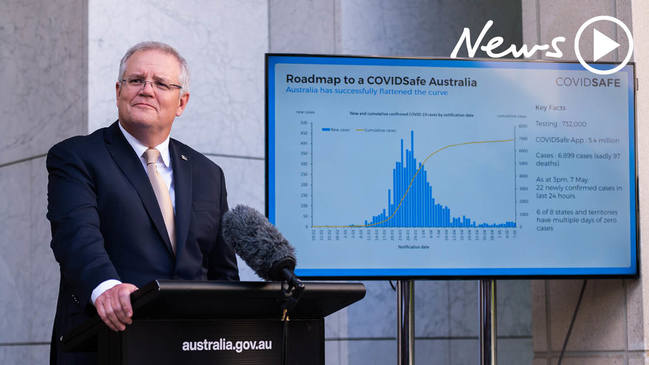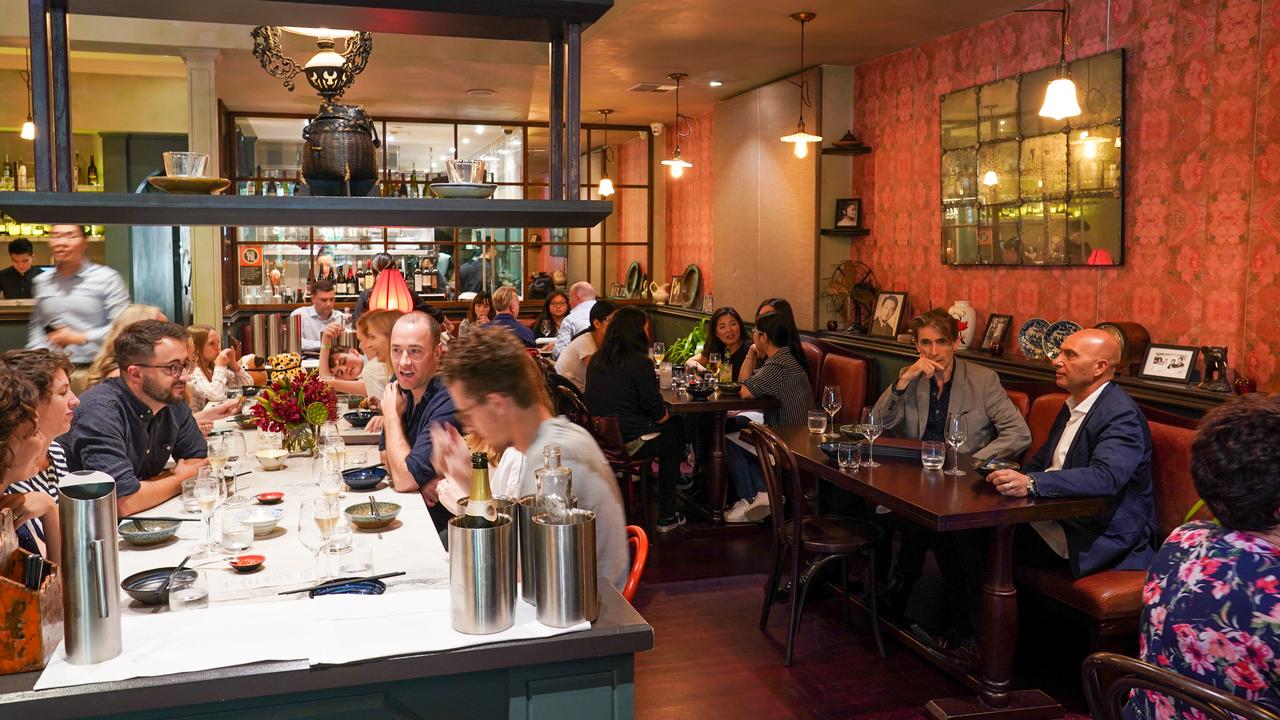Coronavirus Australia: Why 10-person rule won’t allow cafes to reopen
The government has announced its bold coronavirus recovery plan – but don’t expect your favourite cafe or restaurant to reopen just yet.

Many Aussies breathed a sigh of relief when Prime Minister Scott Morrison announced ambitious plans to finally ease coronavirus restrictions last week.
But if you’re thinking you’ll soon be able to head back to your favourite restaurant or cafe, think again.
That’s because stage one of the three-step plan will allow cafes and restaurants to reopen – but with one crucial caveat.
RELATED: Confusion as cafes reopen illegally
RELATED: PM considers slashing or ending $1500 payments
Under the new rules, cafes and restaurants will be permitted to only seat up to 10 patrons at one time, with businesses having to maintain an average density of 4 sqm per person.
And for many hospitality businesses, that simply won’t work.
In fact, in a press conference yesterday, Victorian Premier Daniel Andrews confirmed the state would keep cafes closed for now after receiving feedback that the 10 patron restriction was doomed to fail.
He said it would be better to wait for three weeks in order to allow a higher number of customers through the doors.
“We might be able to go higher. I won’t speculate on what that number is. I think the feedback from many businesses is that at just ten patrons, it’s hard to be viable,” he said.
“If we wait three weeks, if we do the testing, have that further assurance, that the significant steps we took today isn’t causing us trouble, that we can’t manage, then I think we can take a bigger step potentially in June for cafes and restaurants and get them to a point where they are viable.”
Victoria will enter stage one from 11.59pm tomorrow, while South Australia will also kick off stage one tomorrow and some restrictions will be eased in NSW from Friday.
Tasmania will adopt stage one from Monday, May 18 while WA will enter phase 2 on the same date.
Step one will begin in Queensland at 12am on Saturday, May 16 while the Northern Territory and ACT have already announced the lifting of many restrictions.
‘IT IS POINTLESS’
Celebrity chef Colin Fassnidge told news.com.au the 10-person rule that would be in place during stage one would be unworkable for many businesses, including his own.
The My Kitchen Rules judge, whose Sydney restaurants include the top-rated Banksia at the Banksia Hotel in the city’s south and the Kitchen in Terminus Pyrmont, said while the easing of restrictions was a step in the right direction, that strict limit would make it impossible for many venues to turn a profit.
“For us in our business, 10 people is pointless,” he said.
“Margins are already down and I’m sure people are excited, but 4 sqm means you’ll only fit four people in a cafe.
“ … I don’t see many people rushing (to open) a cafe with just four people – they definitely won’t manage. Some cafes might reopen … but I can’t see restaurants reopening because it’s not viable.”
Mr Fassnidge said for pub restaurants like his, it would be “more expensive to stay open” with those limits in place, especially for businesses that did not have outdoor areas.
“It’s a start and we can’t complain. But some businesses will probably wait until they can do it properly,” he said.

“If you rush in and it all starts up again it will be terrible … I think the government is kidding itself.”
But he said one of the few positive things to emerge from the crisis was businesses pivoting and starting new projects, which he predicted would remain an important revenue stream.
He also urged patience once venues reopened properly.
“Once people are allowed back in, they must still abide by the laws and if they are broken, there will be massive fines, so people still need to keep social distancing and keep being as diligent and as good as we have been during lockdown,” he said.
“If there is a second wave, especially going into winter, things will be much worse.
“Most businesses now have great takeaway options so if you want to support businesses, go hell to leather with that because it’s keeping these guys afloat. You might not be able to sit there but you can definitely eat their food at home.”
‘NOT VIABLE’
Mark Jensen, who owns Sydney institution Red Lantern along with Pauline and Luke Nguyen, is another restaurateur who will not reopen his business while the 10-person rule is in place.
The award-winning Vietnamese restaurant has been running for 18 years and has survived previous crises including the SARS outbreak and the GFC, making it one of the longest-running restaurants in Australia.
But Mr Jensen said while the easing of restrictions was undeniably good news, it would be impossible for larger establishments to operate under stage one rules.
“It is exciting – a lot of places will benefit from this and there will be a flow-on effect on larger establishments like ours as it will get people moving about and participating in society again which is great, but for 10 people, it’s really not viable for us to open our doors,” he said.
“A little sushi restaurant might be able to open with 10 people with 1.5m between customers, but it really depends on the dimensions and size of the physical area of the business.”
Mr Jensen said he had stood down most of his causal workers in light of the crisis and that he needed to guarantee the sustainability of the business going forward before calling them back.
He said most members of the public had “no idea what it takes” to run a restaurant and the margins that exist.
“It’s a fine balance and you’re always under pressure to achieve profitability,” he said, explaining he would need to charge three times the menu price if he reopened to just 10 customers at a time.
“We certainly won’t be making hurried steps to reopen our doors until we can break even at least.”
He said most restaurant expenses from wages to utilities and produce had risen over the years while menu prices hadn’t.
“I truly believe people don’t pay enough for the dining experience – it blows my mind that people will go to the fish market and may $15 for 200g of tuna but will expect to pay $25 for it at a restaurant,” he said.
“One thing this crisis has exposed has been the margins and financial stress (many restaurants) are under and many have closed never to reopen again when you add rent, wages and fixed costs to the equation, especially in a city like Sydney.”

He said many businesses were also struggling as JobKeeper payments have only just started to arrive, meaning many had to rely on their own capital in the interim, and that it would be “catastrophic” if creditors suddenly demanded restaurants settle their bills after incorrectly assuming it was back to “business as usual”.
He said there was also a lot of uncertainty about what the future of restaurants would look like, such as whether staff and patrons would be required to wear face masks and how far apart diners would need to be spaced from each other.
Like many eateries, Red Lantern has pivoted during lockdown by selling an “In A Box” menu of “heat and eat meals”.
But Mr Jensen said while they had been a hit, that revenue was still not enough to cover full rent and expenses associated with running a restaurant.
He said the one good thing to come from the crisis was the opportunity to “reboot” and look at the “whole ecosystem of hospitality prices”.
“The great travesty would be if we came out of this and nothing changed – it would be devastating if we came out the other side and restaurants started a competition on price and racing to the bottom to attract customers.”




